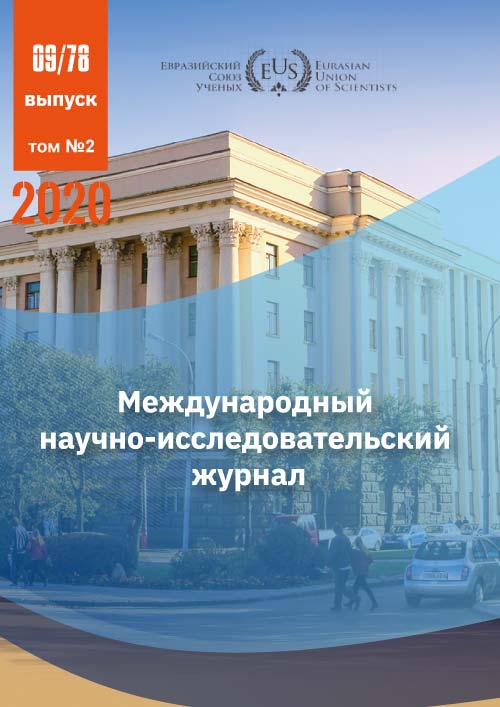DIAGNOSTIC TEST FOR CHILDREN'S PSYCHOPATHY PCL-MC
Abstract
This article is the second in a series of three of our articles on psychopathy. The introduction notes the difficulties and limitations in the diagnosis of childhood psychopathy, especially as part of an expert approach that requires a thorough study of the patient's entire previous life. The second part of the article is devoted to the available tests, questionnaires and diagnostic scales and the difficulties of their use for children are noted. The third part of the article is devoted to neuropsychological methods for diagnosing psychiatry in children and the difference in the perception of emotionally charged samples in healthy and psychopathic children is noted. The fourth part considers the world's most famous tool for diagnosing psychopathy in children within the framework of an expert approach - a List of psychopathic traits - a youthful version of R. Haer and K. Kent and highlights its shortcomings when it is distributed to a younger, pre-adolescent age of the subjects. The fifth part is devoted to the HRBA - MD test, which is proposed for the diagnosis of psychopathy in children at pre-tuberculosis age (612 years) as part of an expert approach and the rules for working with it. This tool, as well as the Youthful version of the List of psychopathic traits, is designed to be filled with specially trained professionals. The sixth part deals with childhood conditions, at a certain age resembling psychopathic traits, but not those. And the conclusion indicates an attempt to clarify a certain analogy in the diagnosis of the stages of psychopathy between sharply dissimilar approaches - expert and phenomenological.
References
https://www.koob.ru/alexandrovskij_u_a/pogranichnie _psyhicheskie_rasstrojstva (дата обращения 10июля 2019).
2.Воронков Б.В. Психиатрия детей и подростков. СПб.: "Наука и Техника", 2017, 288 с.
3.Дацковский И. Модифицированный детальный тест на инфантильность - DIT-M. // East European Science Journal (Восточно-Европейский научный журнал) № 47 (07.2019 [A]), часть 1, с. 4150, статья на русск. яз. URL: https://eesajournal.com/wp-content/uploads/EESA_JULI_47_part_1.pdf (дата обращения: 29 августа 2019).
4.Дацковский И. Два подхода к диагностике психопатий // Клиническая и медицинская психология: исследования, обучение, практика: электрон. науч. журн. – 2019 [Б]. – Т. 7, № 4 (26) [Электронный ресурс]. – URL:
http://medpsy.ru/climp/2019_4_26/article06.php (дата обращения: 18 февраля 2020).
5. Кил К.А. Психопаты. Достоверный рассказ о людях без жалости, без совести, без раскаяния. М.: Центрполиграф, 2015 – 360 с.
6.Ковалев В.В. Психиатрия детского возраста (руководство для врачей). М.: Медицина, 1979, 608 с.
7.Козловская Галина Вячеславовна Психические нарушения у детей раннего возраста (клиника, эпидемиология и вопросы абилитации). Автореферат диссертации … доктора медицинских наук, 1995 URL: http://www.psychiatry.ru/cond/0/diss/1995/94 (дата обращения 30 июня 2019).
8.Личко А.Е. Типы акцентуаций характера и психопатий у подростков. – М.: ИОИ, 2016 – 336 с.
9.Макаров И.В. (ред.) Психиатрия детского возраста. Руководство для врачей. СПб.: Наука и техника, 2019 – 992 с.
10.Иванов Н.Я., Личко А.Е. Патохарактерологический диагностический опросник для подростков. Метод. пособие. М.: "Фолиум", 1995, 64 с.
11. Тиганов А.С. Патология психического развития. [электронный ресурс] URL: http://drlev.ru/book/tiganov4.pdf (дата обращения 30 июня 2019).
12. Хаэр Р. Лишенные совести. Пугающий мир психопатов. Вильямс, 2007
CC BY-ND
A work licensed in this way allows the following:
1. The freedom to use and perform the work: The licensee must be allowed to make any use, private or public, of the work.
2. The freedom to study the work and apply the information: The licensee must be allowed to examine the work and to use the knowledge gained from the work in any way. The license may not, for example, restrict "reverse engineering."
2. The freedom to redistribute copies: Copies may be sold, swapped or given away for free, in the same form as the original.







